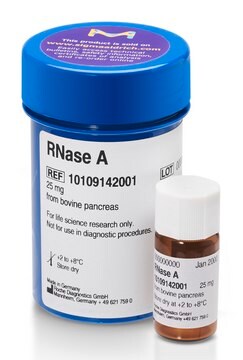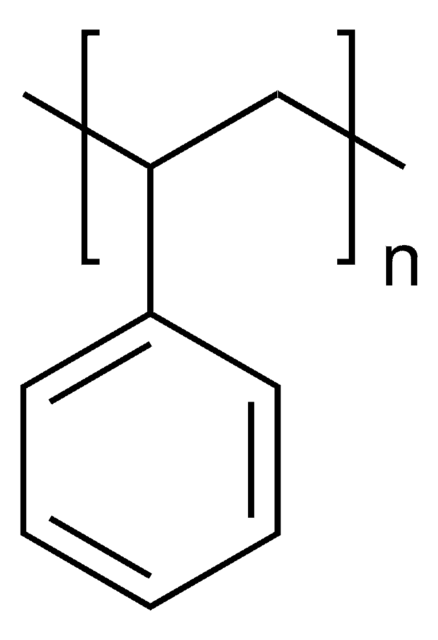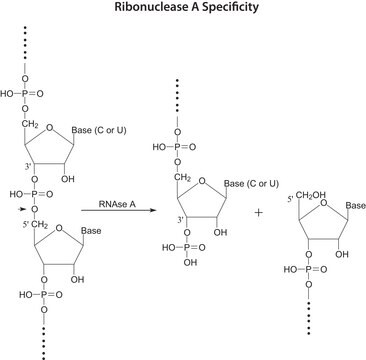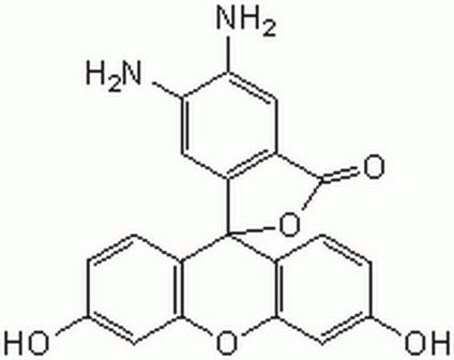81845
Propidiumjodid
≥94% (HPLC)
Synonym(e):
3,8-Diamino-5-(3-diethylaminopropyl)-6-phenyl-phenanthridiniumiodid-methiodid
About This Item
Empfohlene Produkte
Qualitätsniveau
Assay
≥94% (HPLC)
Form
powder
mp (Schmelzpunkt)
220-225 °C (dec.) (lit.)
Fluoreszenz
λex 482 nm; λem 608 nm (pH 7.2)
λex 540 nm; λem 608 nm (bound to DNA)
Lagertemp.
2-8°C
SMILES String
[I-].[I-].CC[N+](C)(CC)CCC[n+]1c(-c2ccccc2)c3cc(N)ccc3c4ccc(N)cc14
InChI
1S/C27H33N4.2HI/c1-4-31(3,5-2)17-9-16-30-26-19-22(29)13-15-24(26)23-14-12-21(28)18-25(23)27(30)20-10-7-6-8-11-20;;/h6-8,10-15,18-19,29H,4-5,9,16-17,28H2,1-3H3;2*1H/q+1;;/p-1
InChIKey
XJMOSONTPMZWPB-UHFFFAOYSA-M
Suchen Sie nach ähnlichen Produkten? Aufrufen Leitfaden zum Produktvergleich
Allgemeine Beschreibung
Anwendung
- zum Färben von DNA in der Zellzyklusanalyse
- zum Färben von Zellen und Zellkernen
- zum Herstellen von Propidiumiodid(PI)-Stammlösung
- zum Färben von Zellen für die Durchflusszytometrie
Leistungsmerkmale und Vorteile
Verpackung
Signalwort
Warning
H-Sätze
Gefahreneinstufungen
Muta. 2
Lagerklassenschlüssel
11 - Combustible Solids
WGK
WGK 3
Flammpunkt (°F)
Not applicable
Flammpunkt (°C)
Not applicable
Persönliche Schutzausrüstung
dust mask type N95 (US), Eyeshields, Gloves
Hier finden Sie alle aktuellen Versionen:
Besitzen Sie dieses Produkt bereits?
In der Dokumentenbibliothek finden Sie die Dokumentation zu den Produkten, die Sie kürzlich erworben haben.
Kunden haben sich ebenfalls angesehen
Verwandter Inhalt
Three-dimensional (3D) printing of biological tissue is rapidly becoming an integral part of tissue engineering.
Apoptosis, or programmed cell death (PCD), is a selective process for the removal of unnecessary, infected or transformed cells in various biological systems. As it plays a role in the homeostasis of multicellular organisms, apoptosis is tightly regulated through two principal pathways by a number of regulatory and effector molecules.
Unser Team von Wissenschaftlern verfügt über Erfahrung in allen Forschungsbereichen einschließlich Life Science, Materialwissenschaften, chemischer Synthese, Chromatographie, Analytik und vielen mehr..
Setzen Sie sich mit dem technischen Dienst in Verbindung.










